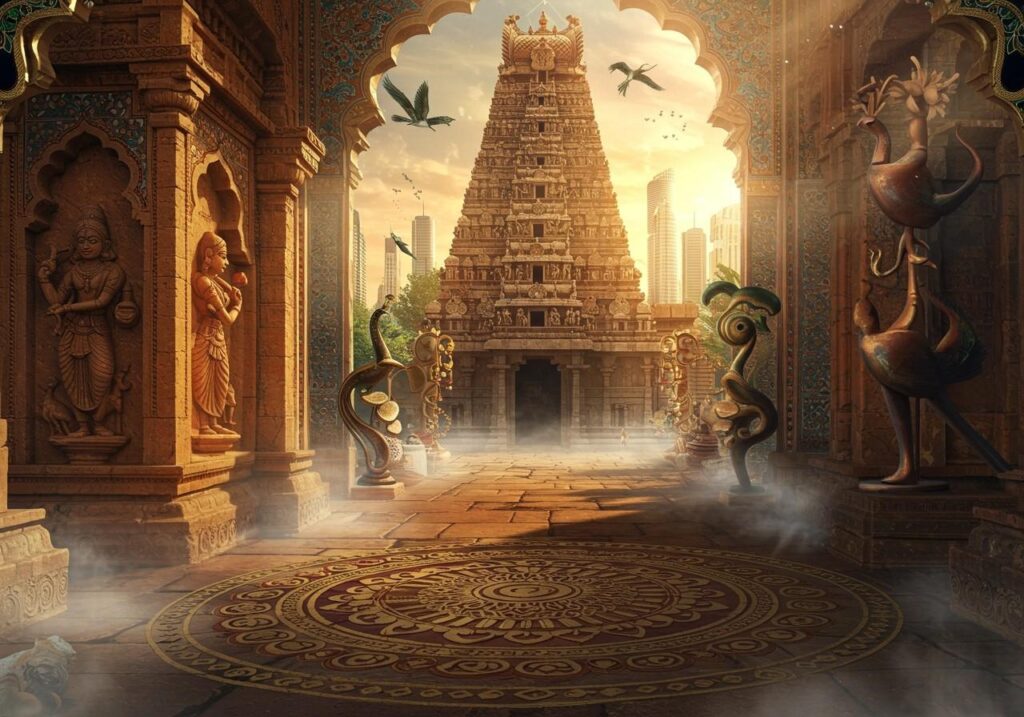
Introduction
Life and death—two sides of the same cosmic coin. They’re the great constants, yet the greatest mysteries. Around the globe and across time, humans have wrestled with the meaning of existence and what (if anything) awaits us after our final breath. From ancient mythology to modern fantasy, from spiritual doctrines to pop culture battles between heroes and villains, the eternal duel between life and death continues to fascinate and frighten.
But have you ever wondered why every culture has a different take on what happens when we die? Or why fantasy novels can’t seem to resist playing with death like it’s just another character in the story?
This article takes you on a journey through cultural beliefs, historical practices, and fantastical interpretations, all while unpacking some eye-opening facts about life after death. Let’s dive in.
Understanding Life and Death: The Basics
Life is the breath, the heartbeat, the pulse of awareness. Death is its quiet opposite—often feared, rarely understood. These are not just biological states but deep emotional and philosophical experiences. Every human who ever lived has pondered them. But do we really know what they mean?
Why We Fear Death and Celebrate Life
Here’s the thing—our fear of death may just be a natural survival tool. We celebrate life with birthdays, weddings, and graduations because it reminds us we’re alive. But death? That’s the great unknown. Like standing before a locked door without a key.
Ever noticed how we say someone “passed away” or “moved on”? It softens the blow. It’s a sign that even in language, we try to protect ourselves from the full weight of death.
Life and Death in Ancient Civilizations
In ancient Egypt, death wasn’t the end—it was a journey. Pharaohs were buried with gold, food, even pets, to help them in the afterlife. The Greeks had the underworld, ruled by Hades. For the Vikings, dying in battle meant being carried to Valhalla.
These civilizations believed that death was just another phase, often more glorious than life itself.
The Role of Religion in Afterlife Beliefs
Religion has long been our map through the mystery of death. It gives structure, comfort, and meaning.
-
Christianity promises heaven or hell based on deeds and belief.
-
Islam describes a vivid afterlife with rewards or punishments.
-
Judaism, though varied, often focuses on legacy and spiritual continuation more than a detailed afterlife.
These beliefs deeply influence how billions face their mortality.
Eastern vs. Western Views on Life After Death
In the West, life is a one-way ticket. You’re born, you live, you die—and then you’re judged.
But in the East, life is more like a circle.
Western minds often see death as a full stop. Eastern traditions? A semicolon.
That’s a pretty big difference when considering facts about life after death.
The Cycle of Rebirth: Hinduism and Buddhism
Hindus believe in reincarnation, the soul’s endless journey through lifetimes until it reaches moksha—liberation from the cycle. Buddhism speaks of nirvana, freedom from desire and suffering, and escape from rebirth.
Death isn’t an end here. It’s a pit stop in a cosmic marathon.
Abrahamic Religions and the Concept of Judgment
If you’ve grown up with Judaism, Christianity, or Islam, you’ve likely heard about the Day of Judgment.
This belief says what we do in life echoes into eternity. There’s a sense of moral responsibility—your actions determine your destination.
No second chances. No respawns. One life, one test.
Indigenous Wisdom: Death as Transformation
Many indigenous cultures around the world—like Native American tribes or Aboriginal Australians—don’t see death as “the end.”
Instead, it’s seen as a return—to the earth, the ancestors, the spirit world. Life and death are part of a balanced cycle, like night and day.
There’s something deeply poetic in that simplicity.
Death in Modern Fantasy: Not Always the End
Ever noticed how in fantasy books, death is flexible?
Characters return from the dead, speak from beyond the grave, or even become immortal. Think of Gandalf’s resurrection in The Lord of the Rings or Jon Snow in Game of Thrones.
Fantasy turns death into a narrative tool, not a final curtain.
Famous Fantasies: Death as a Person
In Terry Pratchett’s Discworld, Death is literally a character—a skeletal figure with a dry wit. In The Book Thief, Death narrates the story, reflecting on human resilience.
These personifications make death seem more familiar, less terrifying—as if making friends with the monster under the bed.
Facts About Life After Death: What Science Says
Science doesn’t claim to have all the answers, but it offers fascinating insights:
-
The brain remains active for several minutes after clinical death.
-
Near-death experiences (NDEs) often involve similar themes—light, tunnels, peace.
-
Some researchers explore quantum consciousness, suggesting the soul might not be bound to the body.
No proof yet—but enough to keep the mystery alive.
Near-Death Experiences: A Glimpse Beyond?
Many who’ve come close to death describe feelings of floating, peace, and meeting lost loved ones. Skeptics argue it’s brain chemistry; believers call it proof.
Either way, it’s one of the most compelling facts about life after death—people experience something profound.
The Psychology of Immortality
Would you want to live forever?
Some do. Myths of the fountain of youth and modern-day quests for digital consciousness speak to our desire to cheat death.
But imagine reading every book, seeing every sunset… forever. Would it still matter?
The idea of immortality challenges what it means to truly live.
Why the Duel Never Ends
Life and death are locked in an eternal dance. They define each other. You can’t appreciate one without understanding the other.
Much like light and shadow, one gives shape to the other.
This duel is not a battle to win—but a relationship to understand.
Conclusion
We may never have all the answers. But maybe that’s okay.
From ancient rituals to fantasy realms, from religious texts to modern science, our quest to understand life and death is a deeply human journey.
So rather than fearing death or denying it, perhaps we should accept it as part of the story—one that makes life all the more beautiful.
FAQs
1. What are some scientifically supported facts about life after death?
While science can’t confirm life after death, studies on near-death experiences and brain activity after clinical death offer intriguing possibilities.
2. Do all religions believe in an afterlife?
Most major religions have some belief in life after death, though the details vary widely. Some focus on reincarnation, others on resurrection or spiritual continuation.
3. Are near-death experiences real?
They are real experiences reported by individuals. Whether they are metaphysical or neurological remains debated among scientists and theologians.
4. How do fantasy stories influence our view of death?
Fantasy often humanizes or reshapes death, allowing readers to explore the concept in creative, less-threatening ways—sometimes offering comfort or new perspectives.
5. Can beliefs about death affect how we live?
Absolutely. Beliefs shape our values, behaviors, and how we treat others. People who believe in a meaningful afterlife may live more ethically or fear death less.




